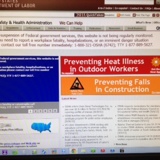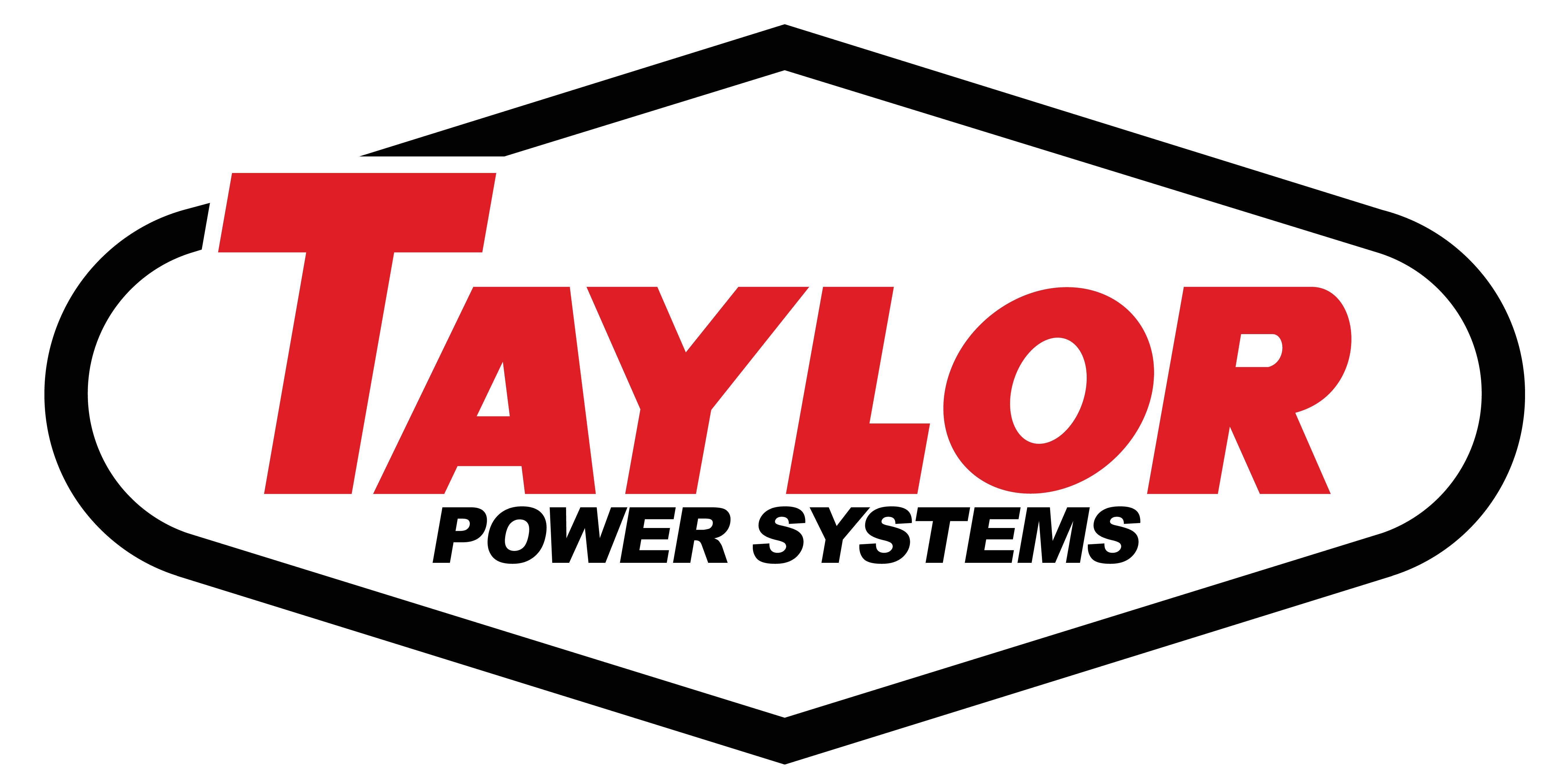Title Page
-
Site conducted
-
Conducted on
-
Prepared by
-
Location
Enviromental Management Systems
Environmental Policy
-
The Company's Environmental Policy or site specific equivalent is displayed at the site.
-
The Policy is communicated to all employees and contractors.
Management Involvement and Support
-
Environmental goals are part of the site's annual objectives.
-
These goals and objectives are communicated to all employees.
-
Performance related to achieving the goals is measured and communicated to all employees at regular intervals.
-
Supervisors and managers are held accountable for performance to the goals.
Knowledge of Environmental Requirements
-
A list or record of applicable environmental regulations/legislation is maintained.
-
The site has access to current regulations.
-
A system is in place to identify new regulations that may impact the operations.
-
All employees receive general environmental training at least annually.
-
Environmental training is part of "new employee orientation."
-
Appropriate environmental awareness training is given to contractors.
Recordkeeping and Reporting
-
Current copies of the permits/licenses, associated applications and related correspondence are readily available at the site.
-
All variances from permit conditions are acknowledged in writing from the permit authority.
-
Documentation of proof of delivery is maintained on site for correspondence with regulatory agencies (for example, certified mail, Federal Express, etc.).
-
Records of environmental testing (if required) and emissions are available.
-
A site-specific records retention policy is in place.
-
Site environmental files are easy to retrieve, comply with the site's record retention program and are stored in a location protected from theft, vandalism, fire, and water damage.
-
A process is in place to report all EHS incidents to the company (for example, crisis notifications, monthly reports and incident reports.<br>
Maintaining the Environmental Systems
-
Safety Data Sheets are available for all materials on-site, including those used by contractors.
-
A spill response plan (or documented procedures to address spill response and clean-up) is in place.
-
A system is in place to investigate the root cause of environmental near-misses and incidents.
-
The site maintains a comprehensive "environmental compliance calendar" that includes but is not limited to site specific due dates of required reports, scheduled testing, permit expiration dates, etc.
Managing Change
-
A documented program is in place to address the environmental impacts and permitting consequences of the following:
-
a. New Chemicals and/or materials
-
b. Changes in regulations
-
c. Process or operational changes
-
d. New products or a change in product mix
-
e. Site renovations or expansions
-
f. Changes in personnel responsibilities
-
g. Trial Chemicals
-
A formal environmental review is conducted for all capital projects.
-
A formal environmental review is conducted for all maintenance projects beyond normal repair.
Air Emissions
-
The site has an inventory of air emission sources, air emission controls, and air emissions.
-
The site has a procedure to evaluate these emissions, sources and controls against the applicable regulatory requirements including licensing and permitting. Applicable requirements are kept on file.
-
The site has the appropriate licenses and permits to operate existing air emission sources and controls.
-
The site operates according to the applicable permits, licenses, and regulations including any required testing, recordkeeping, and reporting.
-
Critical deadlines (including permit renewal) are put in the site's Compliance Calendar and are met.
-
The site has a Management of Change process that covers any new sources, new controls, or changes in the volume or character of emissions from the plant. All changes are managed in accordance with the site's permits and regulations. Appropriate permits or licenses are obtained prior to new source construction.
-
An inventory of all equipment containing "regulated" refrigerants is maintained at the site. The site is aware of restrictions on these materials including phase-out, recordkeeping, and reporting as needed.
-
Solvents or highly volatile materials are kept in closed containers.
-
Maintenance parts washer lids are kept closed when not in use.
-
There is no on-site (outdoor) burning of wastes. (pallets, trim, brush, etc.).
-
All process equipment is permitted as required by regulations and/or there is documentation supporting each piece of exempt equipment.
-
All air emissions recordkeeping is maintained as required in the permit (12-month rolling totals for VOCs and/or HAPs, fuel use, cooling temperatures, etc.)
-
Any required air emissions reports to the agency are filed completely and on time, with appropriate certification.
Water
Wastewater
-
The site maintains a complete inventory of where it generates wastewater, how much wastewater it generates, and what happens to wastewater after generation (i.e sanitary wastewater from sinks and toilets, air conditioner condensates)
-
A plumbing or piping diagram exists and is kept current that shows how various wastewaters are conducted through and from the site. These drawings include floor, roof, and storm drains. A block flow diagram may serve this purpose.
-
Procedures exist to ensure that the plant's wastewater system remains consistent with the block flow diagram, eliminating the potential for cross connections (e.g., process sewers and sanitary sewers) or other inappropriate cross connections.
-
Consideration is given to changes in the plant (chemicals, or processes) that might change the character or volume of wastewater.
-
The site has an active program to evaluate and (as appropriate) reduce the volume, toxicity, health effects, environmental impact and regulatory burden of its wastewater.
-
Plant personnel are given general awareness training. This training includes which drains go where, what substances should not go to wastewater, and how to conserve water to minimize wastewater generation.
-
The current permit and/or city use ordinance is readily available.
-
Where a permit is not required, the site can demonstrate no permit is required and knows how/if its wastewater is regulated (local ordinance, permit by rule, etc).
-
Regulatory and or permit conditions are being met (for example; treatment, monitoring, testing and reporting requirements), and this is part of the site's compliance management system. Due dates are tracked on the Compliance Calendar.
-
Site personnel understand proper sampling techniques for wastewater or have a contract in place to provide this expertise as needed.
-
No wastewater is discharged from the plant without the appropriate pretreatment to meet the permit or regulations. Written procedures exist to involve management and HSE Department before a by-pass of the pretreatment system is contemplated.
-
Pretreatments systems are operated and maintained according to manufacturer requirements.
-
Management oversight and auditing of the wastewater treatment system is ongoing.
-
A daily wastewater log is maintained.
-
Flow meters, pH probes, conductivity meters and similar instrumentation are routinely calibrated and maintained per manufacturer instructions.
-
A notification procedure (for internal and external reporting) exists for bypasses, wastewater problems, exceedances or near misses.
-
A periodic walk around of the exterior of the plant is conducted to look for inappropriate discharge points.
Stormwater Management
-
Raw materials and wastes are stored inside under roof or in containment.
-
Manufacturing activities are not exposed to stormwater without mitigating steps being taken.
-
Vehicle maintenance and washing is not done outdoors. If done outdoors, protective measures are in place to protect Stormwater.
-
Spill equipment and cleanup materials are readily available in case needed to protect stormwater drainage areas.
-
Spills in areas that drain to stormwater are promptly cleaned up.
-
A complete copy of the site's storm water permit is available on-site. If the site doesn't require a permit, supporting documentation is maintained on-site.<br>
-
Site's Storm Water Pollution Prevention Plan (SWPPP) includes all the elements required by the permit.
-
Periodic inspections and visual monitoring (and testing as per permit) required by the SWPPP are completed and documented.
-
Best Management Practices identified in the SWPPP (for example, good housekeeping programs, containment devices) are completed as outlined in the SWPPP.<br>
-
There is a program in place to update or revise the SWPPP if outdoor storage areas change, housekeeping practices change, or personnel responsible for storm water management change.
-
Training designed to improve storm water pollution prevention is conducted and documented at least annually.
-
Sites not required to be covered by a stormwater permit periodically conduct and document a review or inspection to ensure raw materials are not exposed to storm water and no activities are conducted outdoors.
-
The stormwater permit renewal date is on the site's compliance calendar at least a year prior to expiration.
Drinking Water
-
The site has 'knowledge" that the water entering the plant is safe to drink. This knowledge could come from testing, assurances provided by the system operator or governmental representations.
-
A back-flow prevention device is on the water line entering the site.
-
The back-flow prevention device is routinely tested.
-
Plumbing lines (and water coolers/heaters) inside the plant are constructed and maintained so that they do not leach dangerous levels of lead and copper.
-
Maintenance personnel, contractors and other personnel who may disturb drinking water lines receive routine training on the prohibition of cross connections between drinking water lines and process water lines.
-
Where the quality of water is unknown or suspect due to source or internal contamination/plumbing concerns it is clearly marked as "non-potable."
-
Eyewashes and safety showers are on known sources of potable water.
-
Bottled water dispensers are subject to routine "re-sanitization."
Solid Waste
Waste Management General
-
The site has a documented process to evaluate all wastes generated for any "special handling" requirements. Wastes that frequently require special handling and disposal are used oil, batteries, solvents, fluorescent light bulbs, computer monitors, circuit boards, medical waste, scrap metal, wastewater treatment plant filter cake, etc.
-
The site has a waste inventory list and looks at incoming raw materials and manufacturing processes with an eye towards pollution prevention and waste reduction through reuse and recycling.
-
The site has specific waste reduction goals.
-
A documented Waste Management procedure exists which clearly describes how each waste is managed.
-
A "duty of care" is exercised when selecting and using any waste hauler, recycler or disposal firm. "Duty of Care" means the organization to which we intrust our wastes will handle them appropriately. This also includes confirmation of appropriate registration and licensing.
Waste Handling General
-
All employees and contractors are trained on what are the solid wastes at the plant and how and where to properly store, dispose or recycle this material.<br>
-
Containers for solid waste are clearly and correctly labeled for the type of waste and are appropriate for the materials they contain.
-
Solid wastes are segregated from other materials and stored in appropriate and designated areas. What is "appropriate" must be waste specific.
-
Wastes are not exposed to precipitation.
-
Waste storage areas are clean and orderly.
-
Waste storage areas are routinely inspected via an inspection checklist. The evaluation includes proper labeling, closed containers, containment integrity, aisle space, condition of containers, evidence of spills, inappropriate materials in the area, and other aspects as appropriate for the type of waste.
-
Materials for clean-up of spills is readily available in waste storage areas.
-
Wastes are not accumulated on-site for longer than necessary.
Non-Hazardous Solid Wastes
-
A sign is posted near the compactor (if applicable) reminding all employees that this is for non-hazardous solid waste only. And that liquids are not to be disposed of in the compactor.
Special and/or Hazardous Waste
-
Hazardous wastes are segregated from other general wastes as the type and quantity of waste warranted.
-
No waste is evident on the outside of the containers.
-
Waste containers are kept closed except when adding or removing waste.
-
Flammable waste containers are grounded.
-
Special and hazardous waste containers have secondary containment when appropriate for the type of waste stored (e.g. liquids).
-
Special and hazardous waste are accumulated and stored in a secure location.
-
Copies of special and hazardous waste transport documentation are maintained on-site.
-
Emergency response and/or spill cleanup instructions are immediately available where wastes are accumulated and stored.
Used Oil and Universal Waste
-
All used oil storage containers are labeled "Used Oil."
-
A regular inspection program is in place to assure all used oil containers are labeled "Used Oil."
-
All universal wastes are shipped at least annually.
-
All waste shipments dates and reporting deadlines are included on the compliance calendar.
Hazardous Waste (All Generators)
-
The waste management procedure described in "Waste Management General" details the management practices required based on the site's hazardous waste generator status.
-
Site has documentation supporting its hazardous waste generator status.
-
All manifests are thoroughly reviewed prior to waste shipments off-site.
-
State required special waste and/or hazardous waste reports and plans are submitted on-time and complete.
-
All reporting and manifest return dates are included on the compliance calendar.
Hazardous Waste Requirements Common to Small and Large Quantity Generators
-
-
The site has an EPA ID number for a hazardous waste generator.
-
Satellite accumulation areas are located near where the waste is generated.
-
Satellite accumulation areas are well-marked.
-
Containers of hazardous waste in a satellite accumulation area are labeled "Hazardous Waste" or words describing the content of the container.
-
There is a procedure for moving hazardous waste containers from the satellite accumulation area to the main accumulation area within 72 hours of the container being full.
-
Weekly inspections are documented for accumulation areas.
-
Emergency communication is immediately available to those working with wastes in the main accumulation area.
-
The main accumulation area is constructed with materials appropriate for the types of wastes (for example, fire proof room or shed, explosion-proof lights, adequate fire suppression).
-
All hazardous waste in the main accumulation area is marked with its accumulation date (the date the container was moved to the main accumulation area).
-
Hazardous waste in the main accumulation area is staged in an orderly manner, grounded as needed, and there is adequate aisle space between the containers (30 inches minimum).
-
There is a program in place to ensure all hazardous waste is shipped from the main accumulation area within 180 days on its accumulation start date (90 days for a Large Quantity Generator).
-
The final copy of all manifests is received within 30 days of shipment. In cases where the manifest is past due, the site has a log or record of contacting the transporter.<br>
-
The site has identified an emergency response coordinator.
-
An emergency response plan for hazardous waste spills, releases, or other emergencies is routinely reviewed and updated as needed.
Chemical
Chemical Selection and Purchases
-
HSE Department input is sought during the purchase and selection process for ALL new chemicals.
-
Prior to chemical review the site establishes and maintains criteria for chemical approval. This might include a list of chemicals of concern, (HAPs, VOCs, metals, flash point, etc.)
-
Chemical evaluation includes quantity, hazardous characteristics, environmental exposures, emissions, storage requirements, employee exposures, waste implications, wastewater, and MSDS/Tier 1-2 reporting obligations.
-
An on-going analysis of the amounts and types of chemicals and oils stored on the plant site is conducted. This analysis weighs the amounts necessary against the regulatory burden, envrionmental exposures (including transport risk), and the storage method of choice. Where feasible choices are made to minimize environmental risk and regulatory burden.
-
This chemical evaluation is a documented process with documented results.
-
Before a new tank is installed at the site every attempt is made to understand all the regulatory impacts and potential environmental exposures.
-
The chemical approval process applies to contractors and vendors, and also specifies what the limits of a chemical's use may be.
-
There is an on-going process to review chemicals. This includes all chemicals brought on site, not just those that go through a formal purchasing review and screening. This should include the variety of similar substances, amount in inventory, chemical constituent impacts on air, waste, and water management requirements.
-
There is a Safety Data Sheet or Pesticide Label for all chemicals brought on site.
-
For all chemicals brought on site that have an SDS, this SDS (or a list of such chemicals) has been shared with the Local Emergency Planning Committee, State Emergency Response Commission and local fire department when it exceeds the Threshold Planning Quantity (typically 10,000 pounds but can be as low as 500 for some extremely hazardous substances). This must be done within 90 days of a new chemical coming on site.
Chemical and Petroleum Storage
-
The following items are necessary for tank and container storage (inside or outside the plant).
-
The contents of each tank/container is compatible with the tank/container.
-
Tank/container is in good condition.
-
All tank/containers are labeled with at least the contents and hazard classification.
-
Tanks have some type of functioning level indicator to prevent overfilling.
-
Unloading activities are in contained areas and supervised by a representative of the company (not just the driver).
-
If unloading activities are conducted after dark the areas are properly illuminated.
-
Unloading procedures and spill response procedures are conspicuously posted in the unloading areas.
-
Spill response equipment is immediately available in the vicinity of the unloading areas.
-
Connections for filling tanks and containers are capped and locked except during actual unloading. All connections and connection pipes are properly labeled.
-
Tanks or containers of flammable materials are properly grounded.
-
Flammable containers are stored away from combustible materials in either flammable material cabinets or for large quantities explosion proof rooms and grounded.
-
Spill containment for the largest single tank/container (and if outside sufficient extra for rainwater) is provided by one of the following methods for all tanks and containers:
-
Engineered containment structures (concrete, masonry, steel, compacted earth, etc.)
-
Portable containment devices (containment equipped pallets, large bins or tubs, etc.)
-
Integral containment (double walled tanks, etc.).
-
If the building is to be used as containment, the tank or container must be located such that a spill will not reach doors, floor drains, unsealed sills, wastewater sumps, etc.
-
Incompatible materials (such as acids and bases) are not stored so that a spill of one will mix with a spill of the other.
-
All containment devices are in good repair and capable of retaining the material spilled for up to 48 hours (or sufficient to clean up the spill).
-
Past spills from tanks or containers into the containment device have been properly cleaned-up.
-
Past spills from tanks or containers outside of the containment device have been properly investigated, reported and mitigated. Root cause for loss of primary containment must be understood and corrected.
-
The plant has a documented procedure for removing accumulated material (spills and/or water) from a containment device.
-
Containment drain valves are secured when not actively draining material from a containment structure.
-
Tanks, containers, and associated containment are routinely inspected using a site specific checklist.
-
A tank integrity program is in place for all larger containers and tanks.
-
For exterior tanks and containers in addition to containment, the site also has adequate security and increased diligence.
-
Employees are trained on how to respond to chemical and petroleum spills. This training is documented.
-
Contractors are informed of and compliant with site expectations for chemical and oil storage. Contractor employees have adequate training on how to interact with the site's oil and chemical spill plans.
-
Chemicals (including pesticides) are stored and used in accordance with Safety Data Sheet recommendations, Label instructions, and insurance carrier recommendations, environmental regulations, good worker health and safety practice, etc.
Reporting
-
If a site has an underground storage tank, has it been reported (to the government and corporation), and registered as required. (Note: The use of underground storage tanks should strongly be discouraged).
-
If required by the agency registration of the applicable aboveground storage tanks has been submitted.
-
A documented procedure exists to determine the maximum inventory of chemicals on site (at any one time) and to calculate applicability of a threshold quantity for Tier II reporting purposes.
-
Tier II reporting was submitted by March 1st for all chemicals above the threshold planning quantity (LEPC, SERC, fire dept.).
-
A documented procedure exists to determine the maximum use of chemicals subject to Form R reporting.
-
Form R report (if required) was submitted by July 1st for all applicable substances. Report went to EPA and State agency.
-
Record of calculations for Form R determination of applicability are kept for 3 years.
-
The site has a knowledge of reporting requirements under CERCLA and a list of chemicals and associated reportable quantities.
-
Reports of spills are made to the company and appropriate agency in a timely fashion. This is a documented process. Reports and CAPs are kept.
-
The site has an inventory of oil (petroleum) tanks/containers and associated capacities. This includes process units with hydraulic reservoirs etc.
-
The site has an SPCC Plan if the inventory of oil tanks and containers exceeds 1320 gallons for containers 55 gallons or more OR a management plan to maintain oil storage under 1320 gallons.
-
The SPCC plan is reflective of operations, not out of date, certified by a professional engineer, and implemented as written. Records are kept as specified.
-
The site has a way to identify, report, and keep records of allegations of adverse environmental and/or health impacts of chemicals by employees, contractors, neighbors, and customers.
Emergency Planning
-
Emergency Planning crosses many aspects of the plant operation. From an environmental perspective the most common direct impact environmental issues arise from spills. In North America, the reporting obligations vary by the material spilled and the media impacted. The site has an Emergency Plan for the following emergencies:
-
Fire
-
Flood
-
Extreme Weather
-
Power Failures
-
Hazardous Material Spill
-
Individual responsibilities during an emergency are defined in the procedures.
-
Emergency plans and procedures are routinely tested.
-
Results of the tests are documented.
-
Emergency plans and procedures are revised according to the test results.
-
The plant has internal and external reporting procedures identified for the array of events most probable at this site.
Management Systems
-
Site personnel are trained on the emergency plans and procedures routinely.
-
Contractors are trained on the site's emergency plans and procedures.













